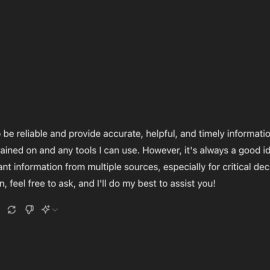

This article is an excerpt from the Shortform book guide to "Turn the Ship Around" by L. David Marquet. Shortform has the world's best summaries and analyses of books you should be reading.
Like this article? Sign up for a free trial here .
What is effective team communication in the leader-leader model? How can leaders communicate without controlling?
Submarine captain David Marquet found that brief and early conversations with his crew at all levels were the key to effective team communication. Ultimately these conversations saved time, prevented mistakes, and focused efforts on the right objectives.
Read more to learn this method of effective team communication.
A Lack of Effective Team Communication
Marquet had been in command for 12 days when Santa Fe headed out to sea after repairs and maintenance, to further prepare for the Commodore’s four-day inspection.
They were doing a practice exercise that involved locating an enemy submarine, monitoring it, and sinking it if they were ordered to do so. But the crew was still focusing on complying with procedures and avoiding mistakes rather than on combative effectiveness.
In charting the route out to sea, they focused on the procedures for avoiding buoys, shallows, boats, and other hazards rather than on determining a route that would take them to where the enemy submarine was likely to be. So they charted the wrong course for a successful exercise. No one noticed this because the officers reviewing the proposed route were also focused on ensuring the charts met procedural standards.
Marquet didn’t see the charts until they had moved up the chain of approvals, so he didn’t discover the problem until the last minute—and then the charting had to be redone. Effective team communication was missing. He decided that in the future, to prevent wasted time, he’d have a quick conversation with the navigator early in the process to ensure planning was focused on the right objective.
Mechanism: Brief, Early Conversations Prevent Wasted Time
To get the officers and crew thinking about operational goals, Marquet initiated more effective team communication by having frequent, brief conversations at all levels. Once they were focused on the right thing, he could back off.
Having brief, early conversations is a mechanism not only for effective team communication but for decentralizing control. The key for Marquet was making them useful without disempowering people. He was careful not to tell people what to do, but to just give feedback on what they were doing. The solution was still up to them. However, Marquet gave them clarity on the overall objective, or what they needed to accomplish. A conversation of a few minutes could save hours.
Questions for Leaders
- What can you do to implement quick checks in your organization?
- How often does your staff waste time and money going in an unproductive direction?
- What inefficiencies or misunderstandings have you uncovered by checking in with staff while they are working on something?

———End of Preview———
Like what you just read? Read the rest of the world's best book summary and analysis of L. David Marquet's "Turn the Ship Around" at Shortform .
Here's what you'll find in our full Turn the Ship Around summary :
- How a captain turned the U.S. Navy’s worst-performing nuclear submarine crew into one of the best
- The principles for developing leaders at all levels to create a passionate, high-performing workforce
- Why the "leader-leader" model works better than the "leader-follower" model






